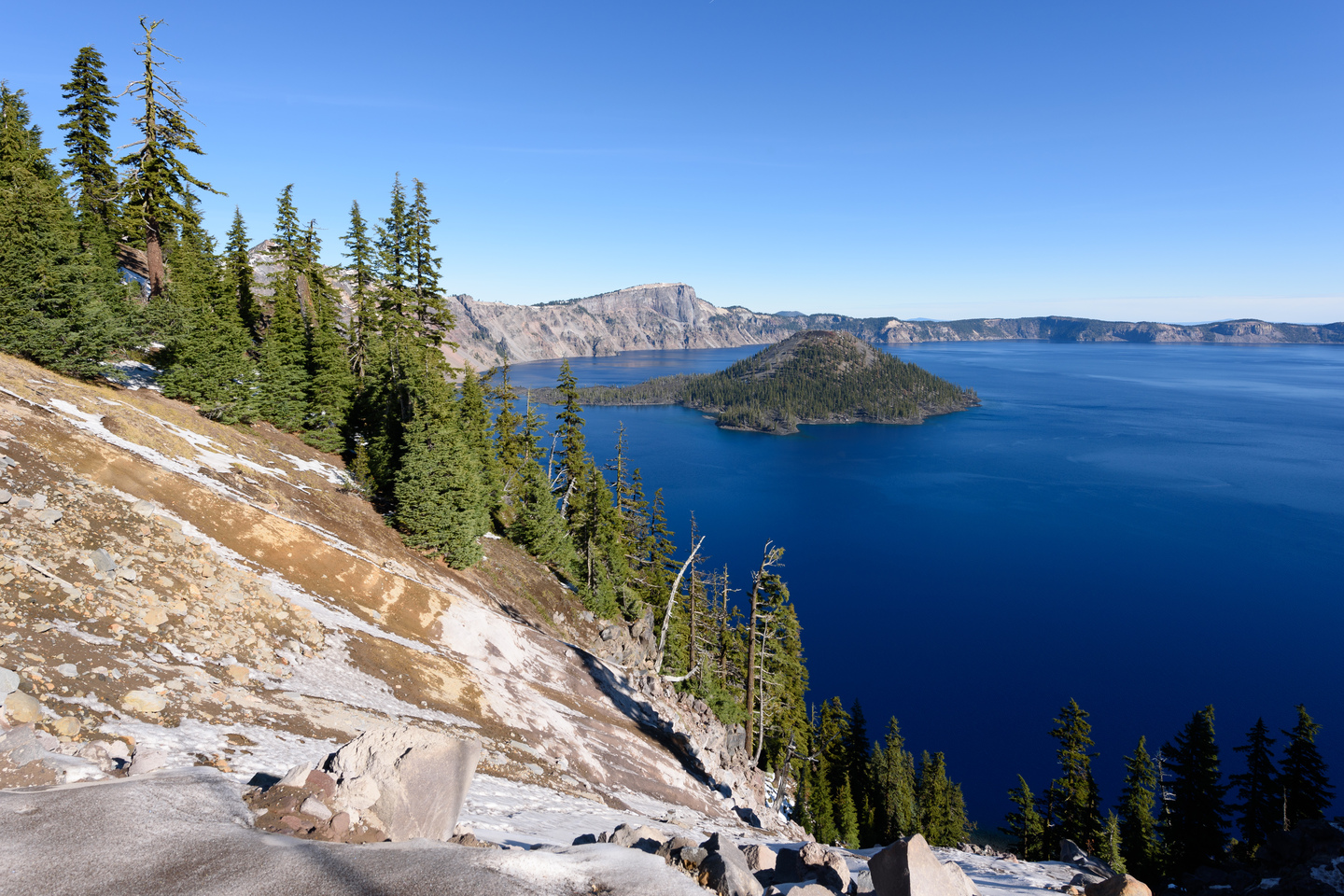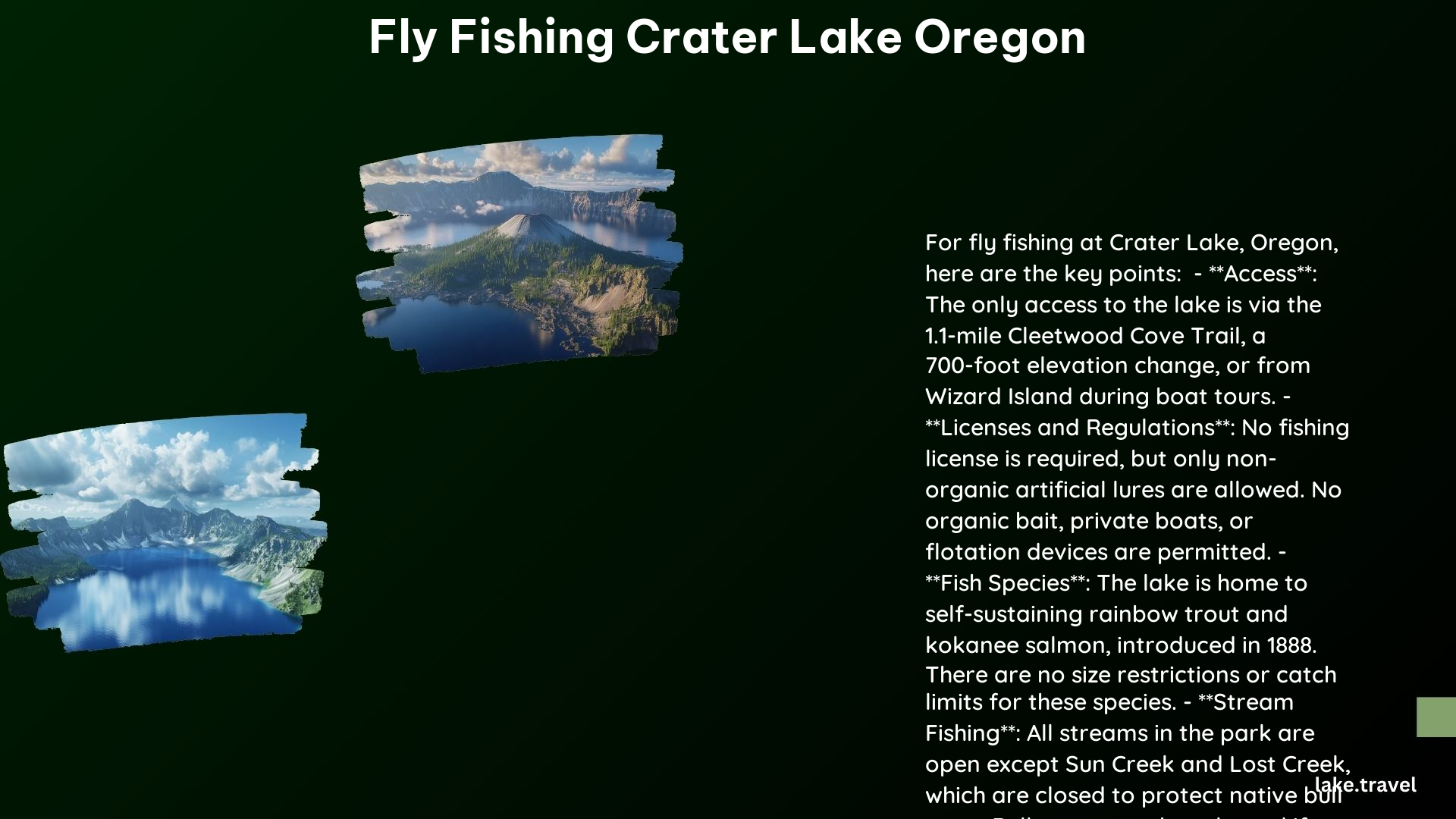Crater Lake in Oregon offers a unique fly fishing experience with its crystal-clear waters and diverse trout population. This guide covers essential tips for successful fly fishing at Crater Lake, including equipment recommendations, fly selection, best times to fish, and important regulations. Whether you’re a seasoned angler or a beginner, this comprehensive overview will help you make the most of your fly fishing adventure at this stunning natural wonder.
What Equipment Do You Need for Fly Fishing at Crater Lake?

To ensure a successful fly fishing experience at Crater Lake, you’ll need the right gear. Here’s a list of essential equipment:
- Fly Rod: 9 or 10-foot rod with a 5 or 6-weight
- Fly Reel: Matching the rod weight
- Fly Line: Floating line for surface fishing, sinking line for deeper waters
- Leaders and Tippets: 9-foot leaders, various tippet sizes
- Waders: High-quality with felt soles
- Wading Boots: Sturdy and comfortable
- Fly Box: Stocked with appropriate flies
- Polarized Sunglasses: For better visibility in clear water
- Hat and Sunscreen: Protection from sun exposure
- First Aid Kit: For emergencies
Remember, the hike to Cleetwood Cove Trail is steep, so pack light and efficiently.
Which Flies Work Best for Crater Lake Trout?

Selecting the right flies is crucial for success at Crater Lake. Here’s a table of recommended flies:
| Fly Type | Specific Patterns | Target Species |
|---|---|---|
| Dry Flies | Callibaetis, Adams, Elk Hair Caddis | Rainbow Trout, Brown Trout |
| Nymphs | Pheasant Tail, Hare’s Ear, Copper John | All Trout Species |
| Streamers | Woolly Bugger, Muddler Minnow | Kokanee Salmon, Large Trout |
| Terrestrials | Ants, Beetles, Grasshoppers | Surface-feeding Trout |
For clear water conditions, opt for flies with gun metal or matte black beads. Size 10 Royal Wolf flies have also proven effective in this area.
When Is the Best Time to Fly Fish at Crater Lake?
Timing is everything when it comes to fly fishing at Crater Lake. Consider these factors:
Seasonal Considerations
- Late April to Early November: General fishing season
- June and October: Peak fishing months
- Summer: Best early morning or late evening due to water temperatures
Daily Timing
- Fishing allowed from 1/2 hour before sunrise to 1/2 hour after sunset
- Early mornings: Ideal for surface feeding trout
- Late evenings: Good for larger fish coming to shallower waters
What Are the Fishing Regulations at Crater Lake?
Understanding and following the regulations is crucial for a responsible and legal fishing experience at Crater Lake:
- Access: Only through Cleetwood Cove Trail (1.1-mile one-way hike)
- Licenses: Oregon state fishing license or one-day pass required
- Bait Restrictions: Only artificial lures and flies allowed
- Prohibited Areas: No fishing in Sun Creek and Lost Creek
- Catch Limits: No restrictions on size, number, or species
- Fish Handling: Cleaning fish in the lake is prohibited
- Restricted Areas: No fishing within 200 feet of boat docks or swimming areas
How Can You Prepare for the Physical Demands of Fly Fishing at Crater Lake?
Fly fishing at Crater Lake involves more than just casting a line. Here’s how to prepare:
- Cardiovascular Training: Regular hiking or stair climbing to build endurance
- Strength Training: Focus on leg and core exercises
- Altitude Acclimation: Spend time at higher elevations before your trip
- Hydration: Drink plenty of water before and during your visit
- Proper Footwear: Break in hiking boots before the trip
- Layered Clothing: Be prepared for temperature changes
- Energy Snacks: Pack high-protein, easily digestible foods
What Unique Challenges Does Crater Lake Present for Fly Fishing?
Crater Lake’s exceptional clarity and unique ecosystem create specific challenges:
- Water Clarity: Fish can easily spot anglers and poorly presented flies
- Limited Access: Only one trail to the lake, requiring careful planning
- Elevation: 6,178 feet above sea level, affecting oxygen levels and weather
- Weather Changes: Rapid shifts in conditions possible
- No Shoreline Vegetation: Lack of cover for anglers
- Deep Waters: Challenging for locating fish in some areas
- Protected Environment: Strict regulations to preserve the ecosystem
How Can You Enhance Your Fly Fishing Experience at Crater Lake?
To make the most of your fly fishing adventure:
- Hire a Guide: Local experts can provide valuable insights
- Practice Casting: Improve accuracy for better presentation in clear waters
- Study Lake Topography: Understand where fish are likely to congregate
- Use Technology: Fish finders can help locate schools in deeper waters
- Respect Wildlife: Be aware of local fauna and maintain a safe distance
- Capture Memories: Bring a waterproof camera for stunning photos
- Leave No Trace: Practice responsible fishing and hiking
By following these guidelines and preparing thoroughly, you can enjoy a memorable and successful fly fishing experience at the breathtaking Crater Lake in Oregon.
References:
1. https://www.nps.gov/crla/planyourvisit/fishing.htm
2. https://diyflyfishing.com/crater-national-park-oregon/
3. https://www.billmatthewsoutdoors.com/post/fishing-crater-lake-national-park
